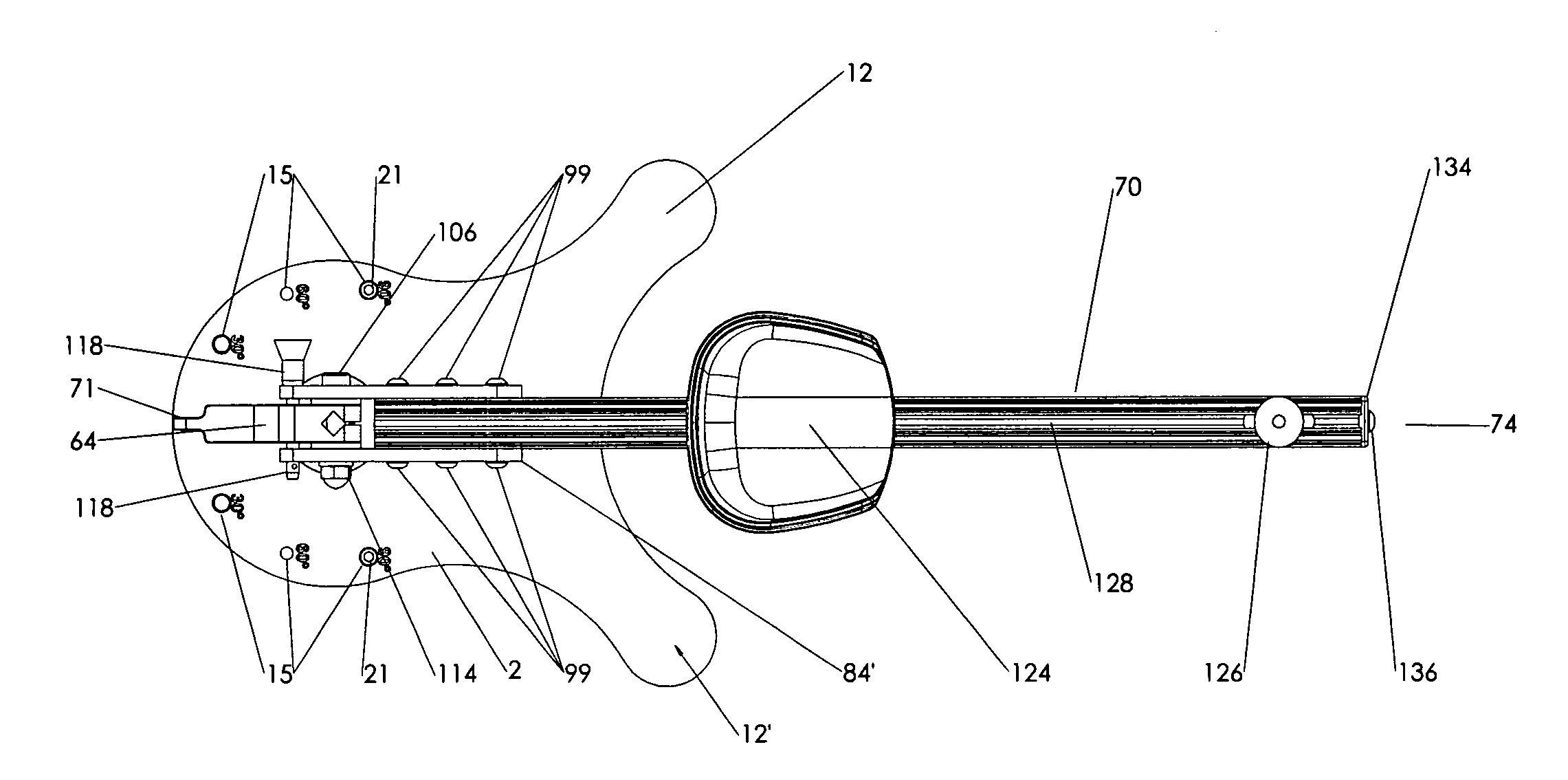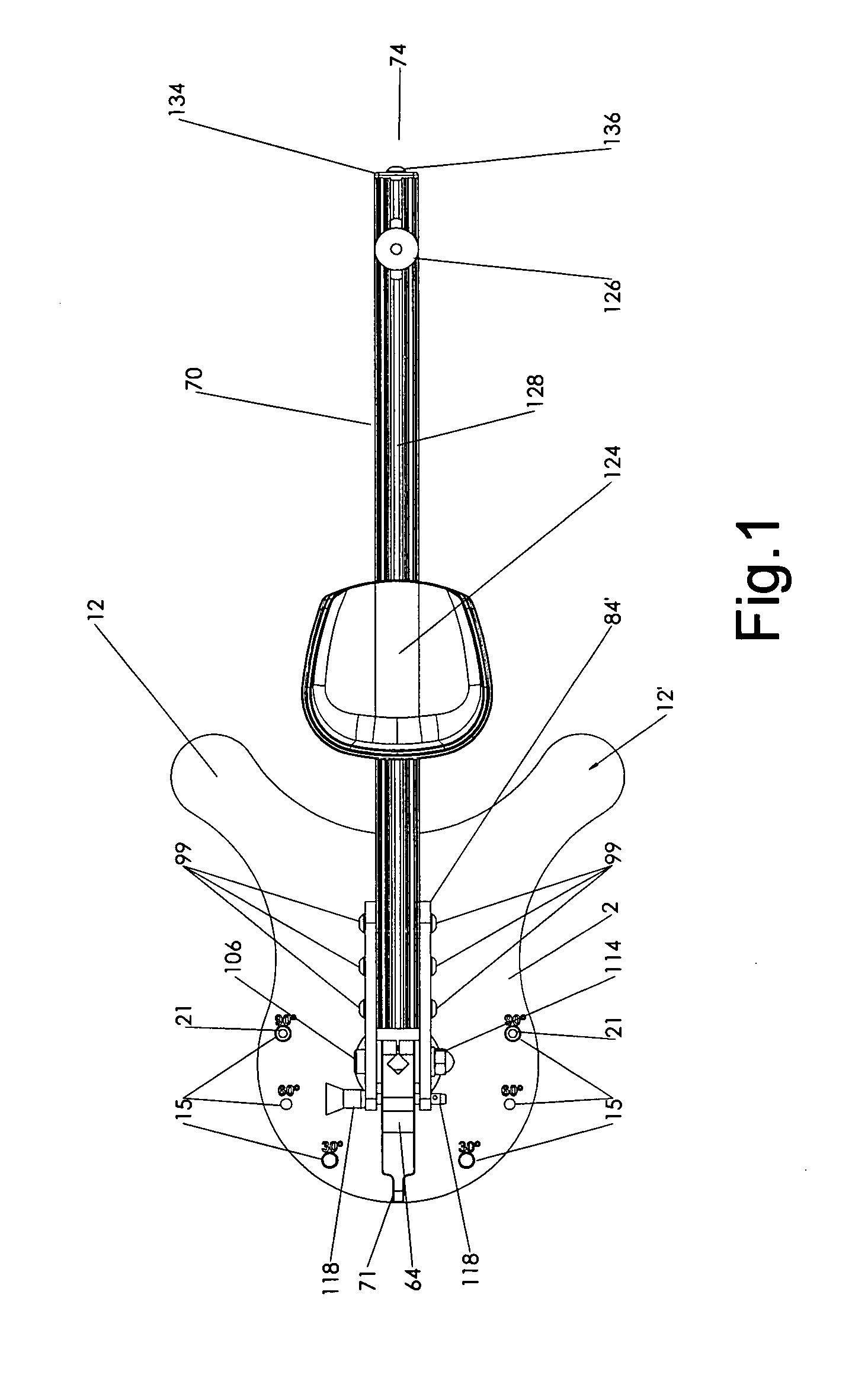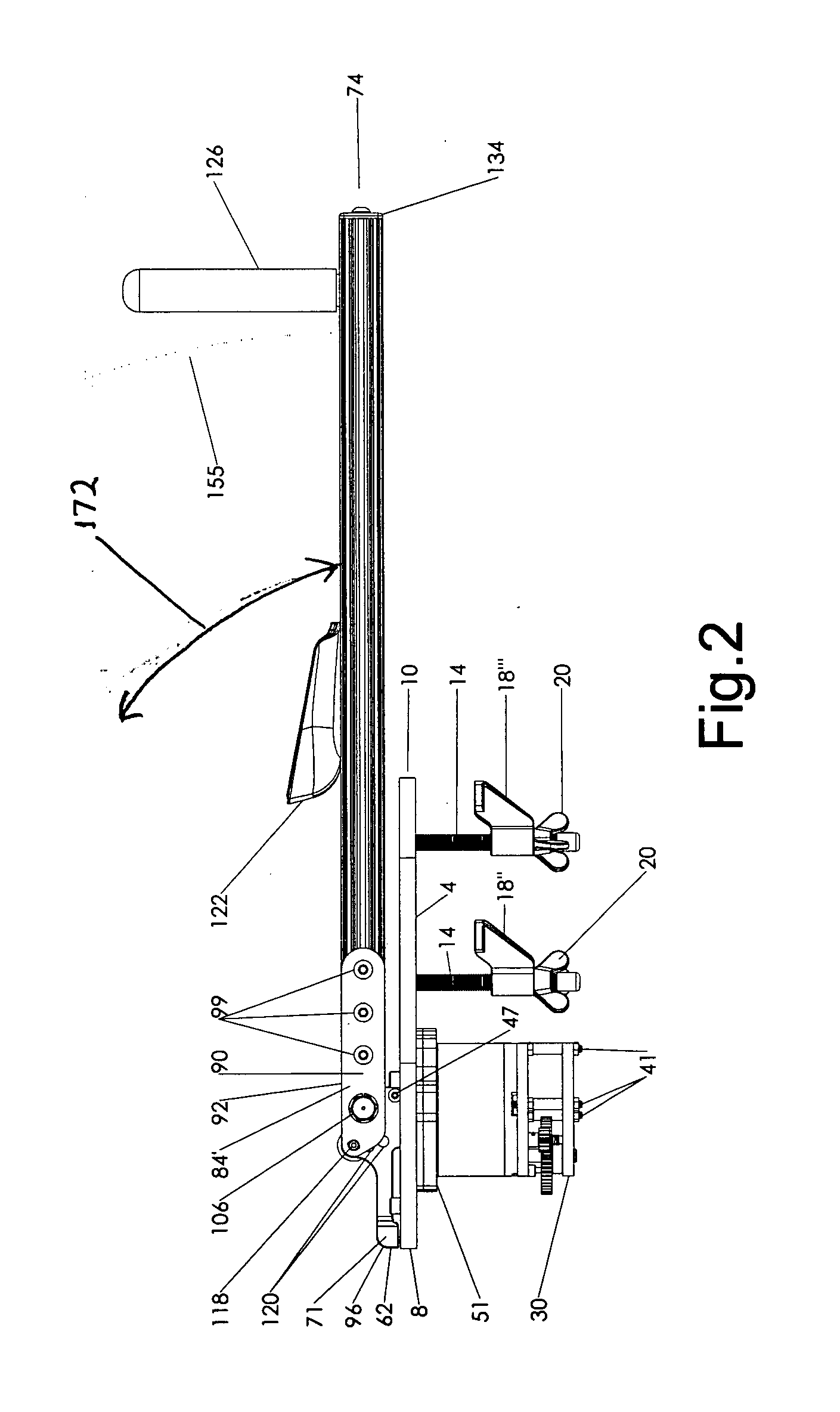Shoulder rehabilitation and exercise device
- Summary
- Abstract
- Description
- Claims
- Application Information
AI Technical Summary
Benefits of technology
Problems solved by technology
Method used
Image
Examples
Embodiment Construction
[0060]The drawing figures (1-8) illustrate a preferred embodiment of the shoulder therapeutic and exercise device of the present invention. FIGS. 9 and 10 illustrate, in detail, the damper shown in the preceding figures.
[0061]As illustrated in the figures, base plate 2 is configured as a flat plate having a lower surface 4 and an upper surface 6. The base plate may also be described as having a proximal portion 8 and a distal portion 10 as well as a longitudinal axis running from the proximal to distal portions of the base plate, along the midline thereof. The overall shape of the base plate utilized in the preferred embodiment illustrated in the figures includes two distal extensions 12&12′. As discussed in more detail below, these distal extension of the distal portion of the base plate of this particular embodiment of the present invention enable the base plate to easily engage the corner portion of a table top. The base plate illustrated also includes restrictor bores 15, which,...
PUM
 Login to View More
Login to View More Abstract
Description
Claims
Application Information
 Login to View More
Login to View More - R&D
- Intellectual Property
- Life Sciences
- Materials
- Tech Scout
- Unparalleled Data Quality
- Higher Quality Content
- 60% Fewer Hallucinations
Browse by: Latest US Patents, China's latest patents, Technical Efficacy Thesaurus, Application Domain, Technology Topic, Popular Technical Reports.
© 2025 PatSnap. All rights reserved.Legal|Privacy policy|Modern Slavery Act Transparency Statement|Sitemap|About US| Contact US: help@patsnap.com



